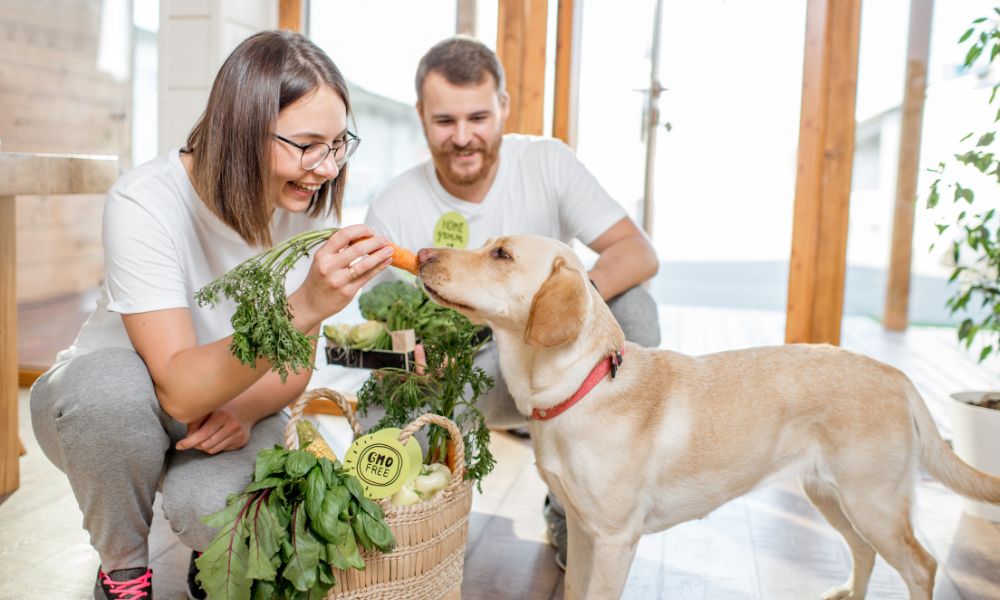
How to Stop Your Dog from Barking at Other Pups

Understanding why dogs bark at other dogs is essential. Barking is a natural canine behavior. Yet, excessive barking can be problematic.
It is important to differentiate between normal and problematic barking. Setting realistic expectations for training is crucial so you do not break the trust between you and your fur baby.
Let's talk about various strategies to curb this behavior. You will learn about behavioral modification techniques. We will explore the role of exercise, nutrition, and consistent training. Each plays a part in managing your dog's barking.
Keep reading to discover effective methods to reduce excessive barking. These tips will help you and your dog enjoy peaceful walks. You will learn to foster a calm and respectful interaction with other pups. Your journey to understanding and helping your dog starts here.
Identifying the Causes of Barking
Recognizing why dogs bark is the first step to stopping your dog's bad habits. Fear-based barking is common. Territorial behavior can also cause barking.
Excitement or playfulness often leads to barking. Social or attention-seeking behaviors are factors. Underlying health issues may contribute to excessive barking.
Basic Obedience Training
Teaching the 'quiet' command is effective. It helps control barking. Reinforcing basic commands like 'sit' and 'stay' is essential.
Consistent training is necessary. Reward-based training methods are beneficial. Patience plays a crucial role in training success.
Related: Exploring Why Dogs Choose to Sleep Under Beds
Socialization Techniques
Socialization helps reduce barking. Gradual exposure to other dogs is a good approach. Controlled playdates with calm dogs are helpful.
Attending obedience classes with other dogs is beneficial. Positive reinforcement in social settings is effective. It is important to monitor and manage interactions.
Using Distraction Techniques
Distraction can redirect a dog's focus. Using toys or treats works well. Engaging in alternative activities helps. Timing is important in distraction techniques. Noise-making toys can be a good diversion. Training dogs to focus on their owner during walks is useful.
Managing the Environment
Managing the environment helps control barking. Avoiding known triggers is a good start. Creating a safe and calm home environment is crucial.
Using barriers or fences can reduce visual stimuli. Managing outdoor spaces for controlled exposure is beneficial. Utilizing quiet areas for walks can help.
The Role of Exercise
Regular exercise is essential. It can reduce excessive barking. Structuring exercise routines helps. Balancing mental and physical stimulation can also help curb bad behavior like barking.
Regular playtime is important for a dog's well-being. It keeps them engaged and less prone to barking.
Behavioral Modification Techniques
Behavioral modification is a critical part of many dogs' training. Counter-conditioning and desensitization are effective. They help dogs become accustomed to other dogs.
The role of a professional dog trainer is significant. They can guide you through these techniques. Implementing gradual exposure helps dogs adjust. Rewarding calm behavior reinforces good conduct. Consistency in behavioral modification is crucial for success.
Addressing Anxiety and Fear

Anxiety and fear can cause barking. Recognizing signs of anxiety in dogs is the first step. Strategies for reducing anxiety are diverse. In severe cases, consulting a veterinarian is necessary.
Using calming aids and products can be helpful. Creating a secure and comforting environment is essential.
Reduce your dogs' anxiety and fear by building them a safe space to relax in. Take a look at the Paw.com store for everything you need to pamper your pup.
Monitoring Progress and Setbacks
Monitoring your dog's behavior is important. Keeping a behavior log helps track progress. Celebrate small victories in training. Adjusting strategies as needed is part of the process.
Seek professional help if progress stalls. Patience and persistence in training are vital.
Related: How to Show Your Dog Love 101
Advanced Training Techniques
Advanced training can be beneficial. Engaging in specialized training programs is effective. Hiring a professional dog behaviorist can provide more targeted help.
Exploring agility or advanced obedience classes can be advantageous. Consistent and advanced commands improve communication. Tailor training to your dog's specific needs.
Nutritional Considerations

Nutrition impacts behavior. Examining your dog's diet is important. Consult a vet about dietary changes. The role of nutrition in overall well-being is significant. Consider supplements for calming effects. Avoid foods that may heighten excitability.
The Importance of Patience and Consistency
Behavior change takes time. Consistent training and rules are necessary. Avoid frustration and negative reinforcement. Celebrate incremental progress. Maintaining a calm and positive demeanor is critical when calming a barking dog.
Related: Roughhousing or More? Exploring Why Dogs Play Fight
Utilizing Technological Aids
Technological aids can support training. Explore bark collars and their proper use. Use apps for training and monitoring. Surveillance cameras can track behavior. Engage with online training resources. Technology should supplement, not replace, training.
Are you looking to learn more about how to keep your dogs from barking? Check out the blog at Paw.com for everything you need to learn about dogs.
Creating a Peaceful Coexistence
We have covered effective strategies to stop your dog from barking at other pups. Behavioral modification techniques play a crucial role. They help your dog adapt to the presence of other dogs calmly.
Addressing anxiety and fear is essential. These emotions often underlie excessive barking. Proper nutrition and advanced training techniques also contribute to a well-behaved dog.
A holistic approach is vital. It considers all aspects of your dog's life. This includes their environment, diet, and emotional well-being. Such an approach ensures more sustainable results. Patience and consistency in training are more than a virtue; they are necessities. They are the foundation of any successful training program.
Understanding and meeting your dog's needs is of utmost importance. Each dog is unique. Their barking might stem from various causes. Tailoring your approach to their specific needs will yield the best outcomes.
For more insights and detailed guidance on dog training, visit Paw.com. You will find many resources to help you and your dog enjoy a peaceful and harmonious coexistence. Your commitment to your dog's well-being and training is the key to a happier, quieter life for both of you.
Share this article
written by


